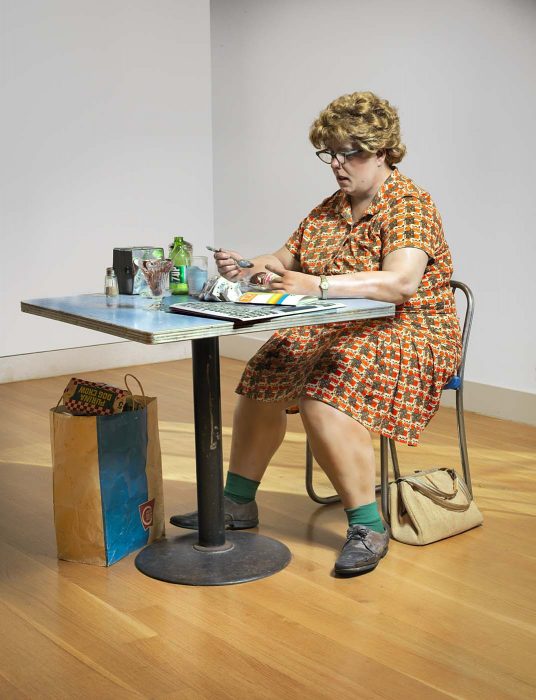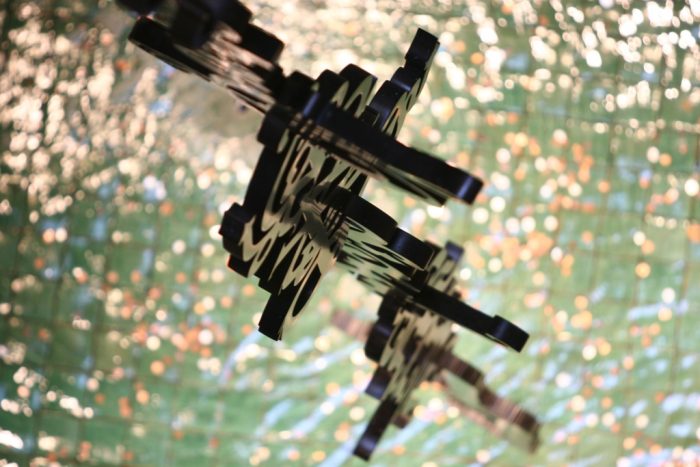A few of my favorite things: Carrie Heflin
Smithsonian staff work countless hours in the halls of our museums and research centers, in the field, at the Zoo, in our gardens and facilities. We are privileged to spend time with some of the nation’s most cherished treasures as we go about our duties. Sometimes, these unique experiences find a special place in our own personal stories. Welcome to the first installment of A few of my favorite things, by Amy Kehs, a closer look at our colleagues through the artifacts at the center of those special “work moments.” Meet Carrie Heflin and a few of her favorite things.
When I heard that the coordinator of Wegmans Wonderplace at the National Museum of American History had previously worked in the Smithsonian’s Early Enrichment Center, I knew she would have great stories and awesome picks for her most favorite things. Carrie Heflin, a graduate of the University of Virginia, began her Smithsonian career in 2011 as a classroom teacher for SEEC; she later became responsible for coordinating professional development for SEEC staff before making to move to Wegmans Wonderplace just a few months before it opened in December 2015. Wegmans Wonderplace, located in 1 West of NMAH, is a 1,700-square-foot interactive gallery geared to our littlest visitors, ages 0-6, who can wander and wonder about history in this completely adorable and captivating space.
Carrie admits that it is hard to pick favorites, but once she gave it some thought, there are three artifacts that mean something special to her and have earned the title of “most favorite.”

Carrie Heflin stands next to display case with a clock face and batteries in the center of Wegmans Wonderplace at the Smithsonian’s National Museum of American History. (Photo by Amy Kehs)
Carrie’s first favorite is the Smithsonian’s slave dial to the clock in the Smithsonian Castle tower. In the 19th and 20th century it was common for institutions or companies that required clocks throughout a building to synchronize their timekeeping with the use “master” and “slave” clocks. The system included a central timekeeper, the master clock, that sent periodic impulses to a number of secondary or slave clocks. The Smithsonian’s system first resided in the north tower of the Arts and Industries building and was in use from 1881 to 1932. The master clock used electricity to send impulses to 18 clocks throughout the A&I building and the Castle, keeping them all perfectly in sync. The Smithsonian was quite proud of its clock system and even included a mention of it in the 1881 annual report, “It is believed that in no building in the world, with the exception of the Grand Opera House in Paris, is there so perfect and complete an application of electricity to practical services.” The slave dial, some of its batteries and one of the clock faces now watch over the center of the Wegmans Wonderplace exhibit. It is in the midst of a great play structure, giving little ones the opportunity to examine it from all angles.

Woman Eating
1971
Duane Hanson
Smithsonian American Art Museum
Museum purchase through the Luisita L. and Franz H. Denghausen Endowment
Carrie’s second favorite is Woman Eating by Duane Hanson, currently on display at the Smithsonian’s American Art Museum. Hanson’s piece is an extremely lifelike sculpture of a woman sitting at a table and eating. Woman Eating was one of Carrie’s favorite pieces to share with her students at SEEC. She says the kids loved creating stories about the woman and asking questions. “What’s in her bag?” “Where did she go shopping?”
We can all relate to the experience of seeing or hearing something and then noticing references to it popping up everywhere too frequently to be a coincidence. Duane Hanson’s pieces seem to find Carrie. After she made Woman Eating part of a lesson plan, she kept noticing his realistic sculptures work everywhere. She noticed visitors startle as they rounded a corner at the Whitney Museum of American Art in New York City. She thought to herself, “It must be a Hanson.” She was right. Another time, while visiting the Nelson-Atkins Museum of Art in Kansas City, she spent quite a while in a gallery before realizing that the security officer in the corner was really a Duane Hanson sculpture.

“Monkeys Grasp for the Moon” is a suspended sculpture designed specifically for the Sackler Gallery by Chinese artist Xu Bing (born 1955), as part of an October 2001 exhibition of his work titled “Word Play: Contemporary Art by Xu Bing.” (Photo by Scott Stark)
Carrie’s third favorite thing at the Smithsonian is Xu Bing’s sculpture, Monkeys Grasp For the Moon. This sculpture is suspended from the ceiling in the Arthur M. Sackler Gallery. It is created from 21 interlocking wooden pieces, each not only resembling a monkey but also spelling the word “monkey” in one of 12 languages. Linking arms and tails they cascade down to a reflecting pool at the bottom level of the museum. One summer, Carrie mentored a intern at SEEC who had impaired hearing. They worked to find good ways to communicate but it was sometimes hard to explain to their young students that the intern could not hear and communicated differently. Inspired by Monkeys Grasp for the Moon, she created a lesson plan on language and communication would help. She and her intern took the kids to see Xu Bing’s sculpture and incorporated the help of the children’s parents to help them learn to count to five in different languages. After that they incorporated the parents and invited them in to teach the students how to count to five in other languages. It is now one of her favorite memories of working at SEEC.
Stay tuned for more favorite things from Smithsonian employees. If you have a suggestion or a favorite of your own, please let us know!
Posted: 27 February 2017



